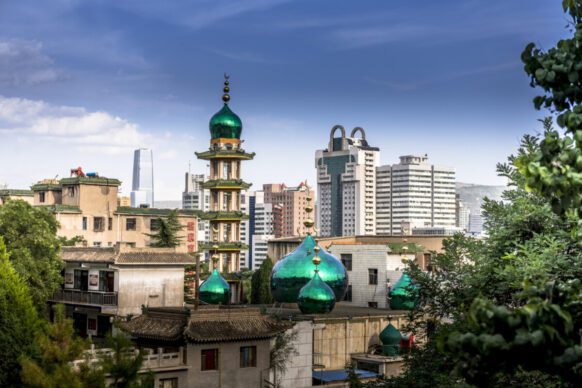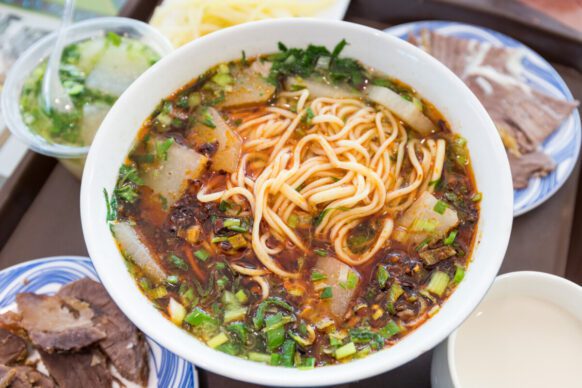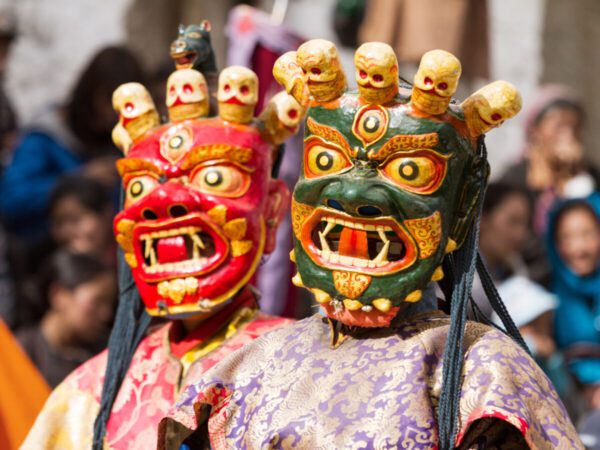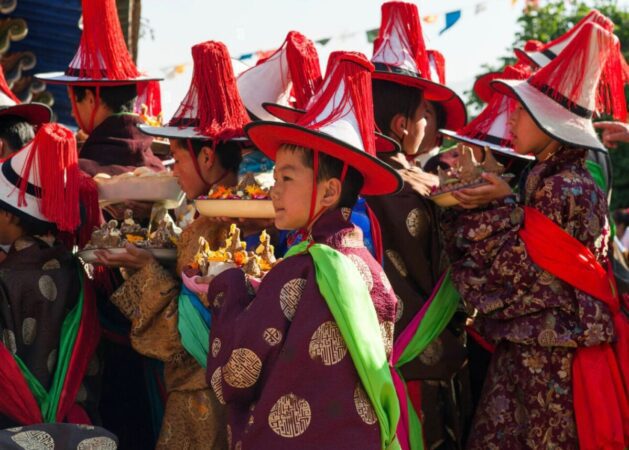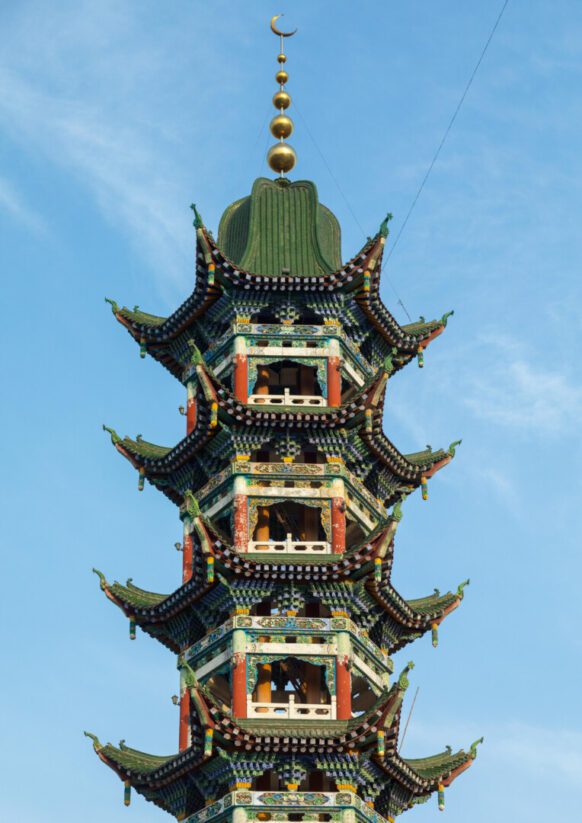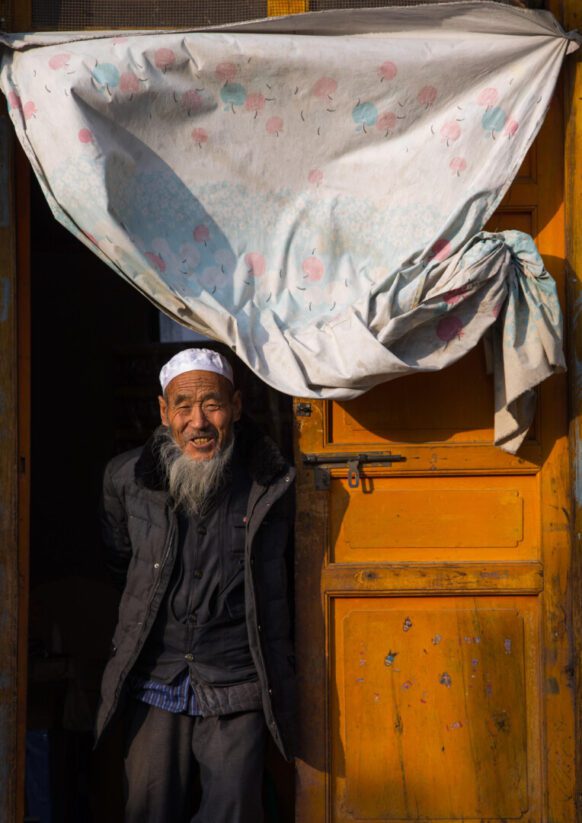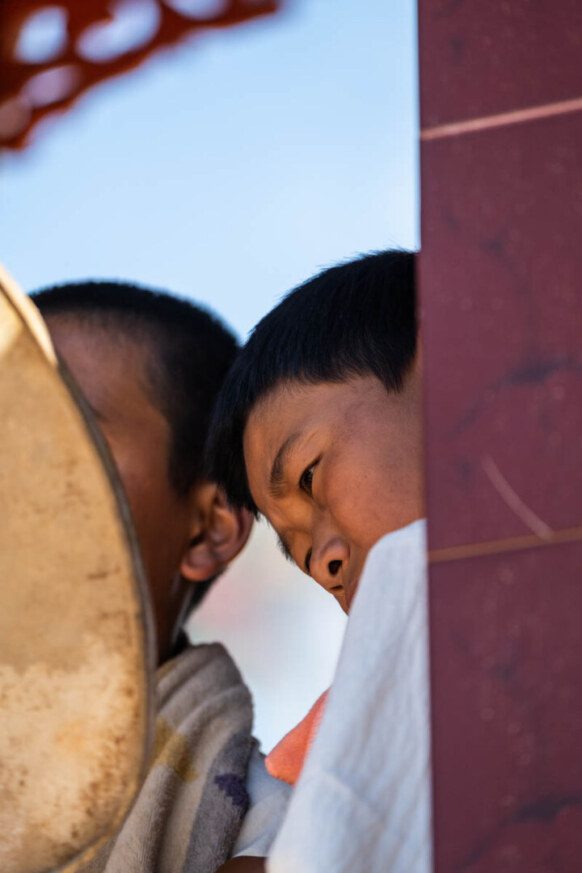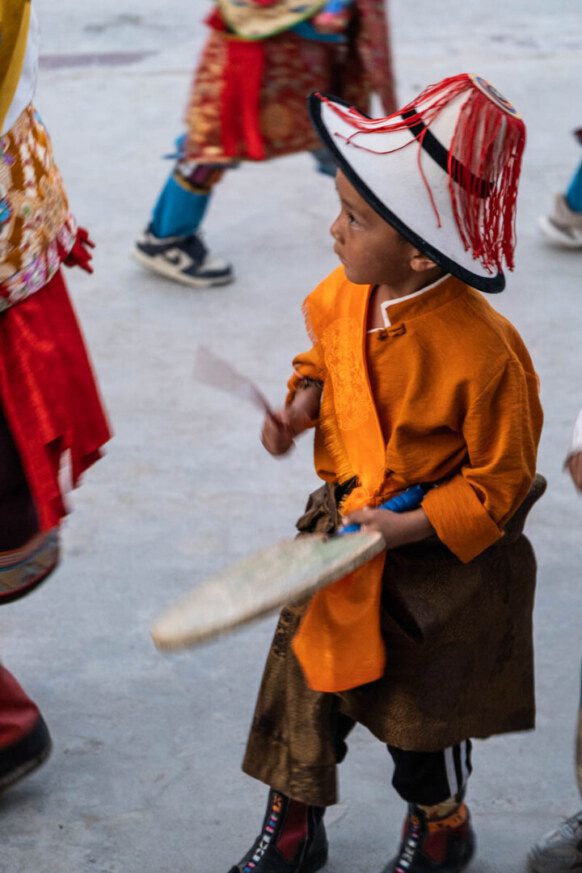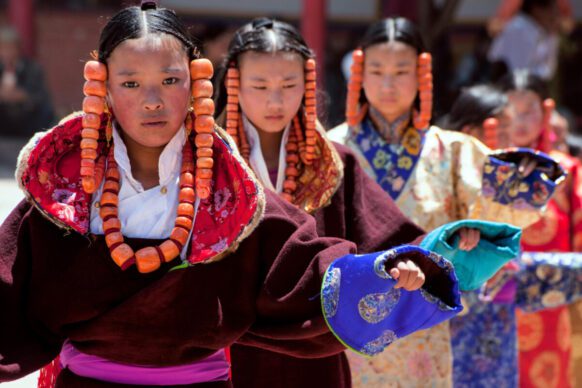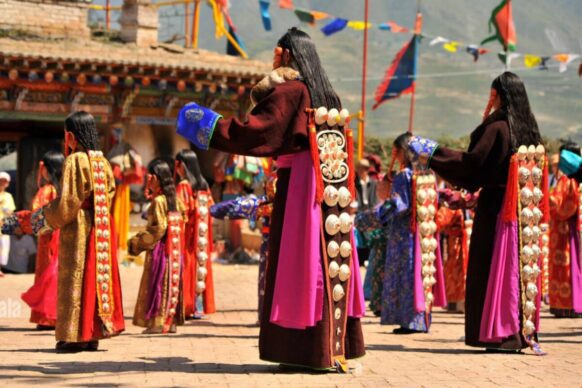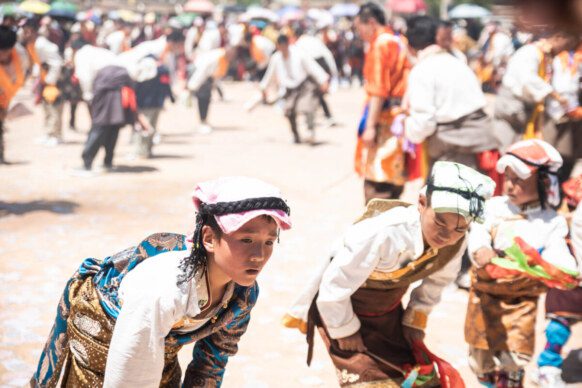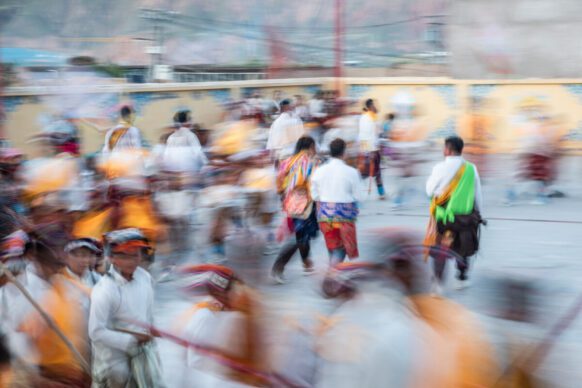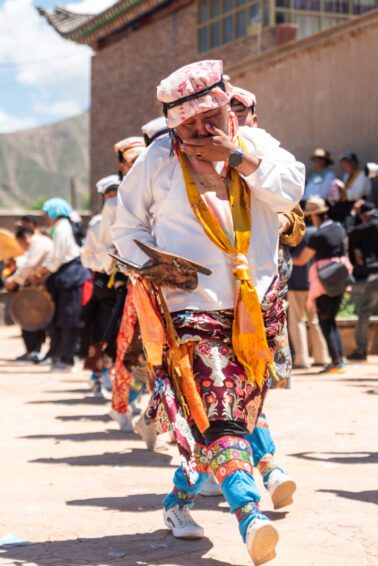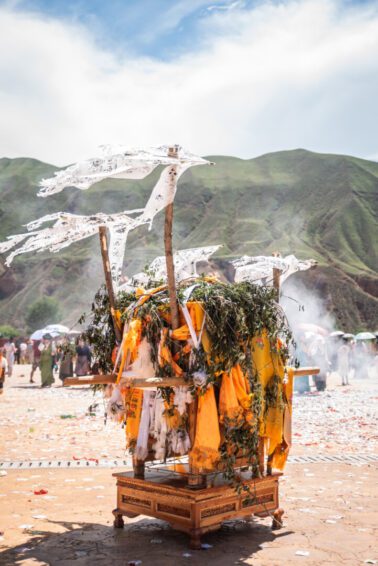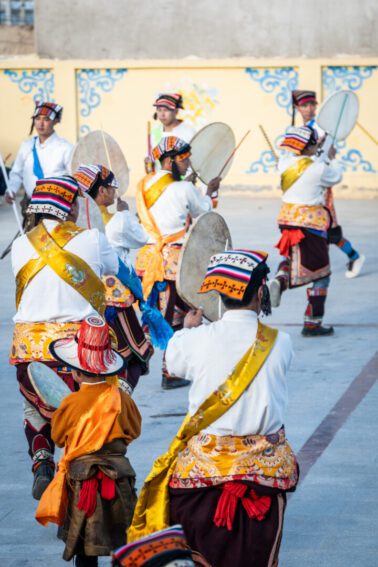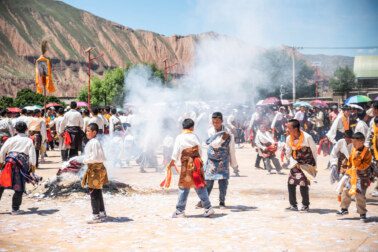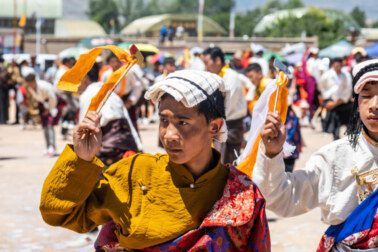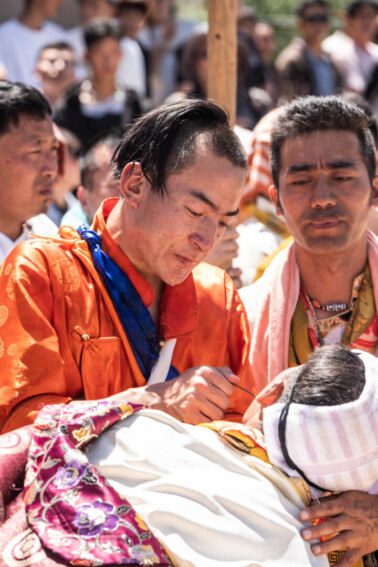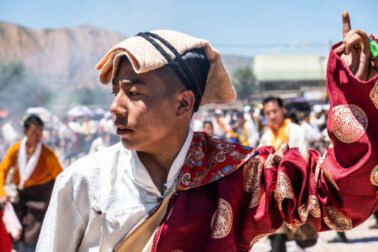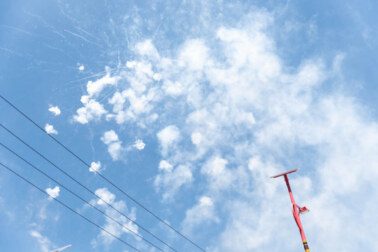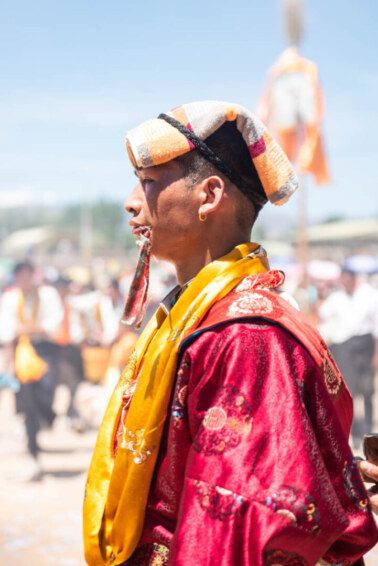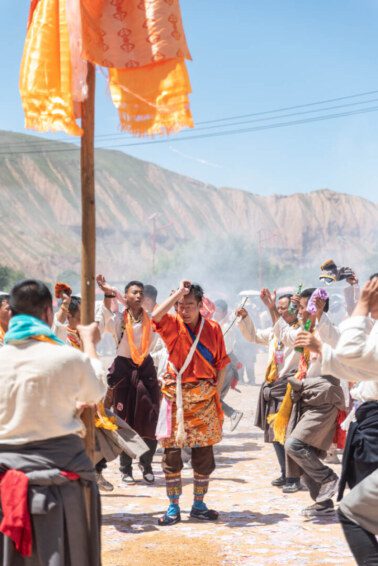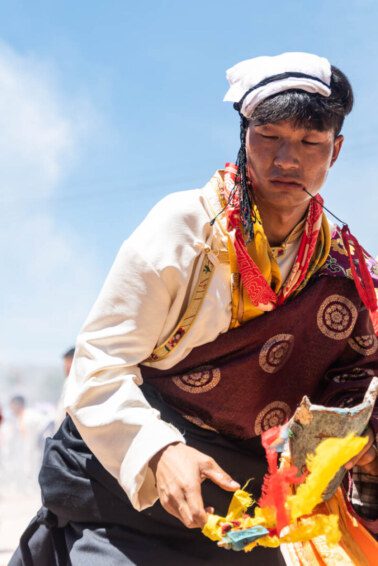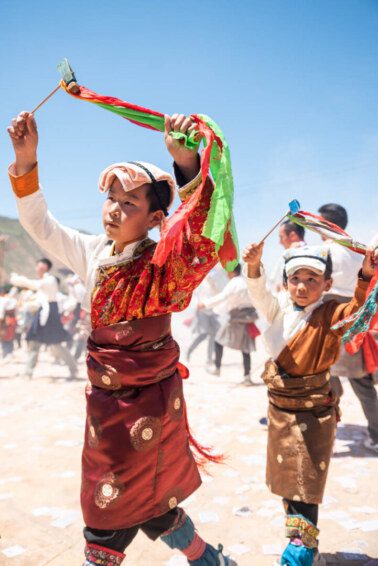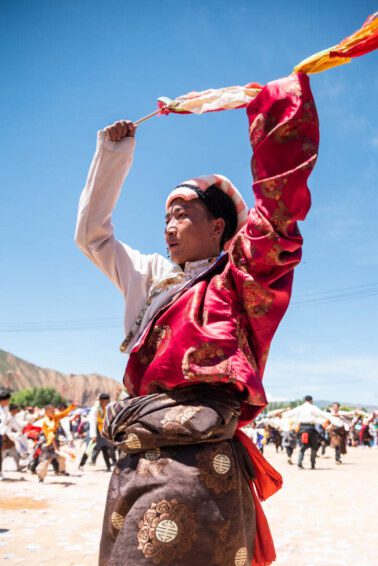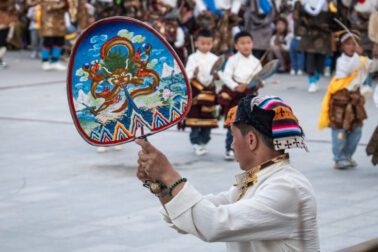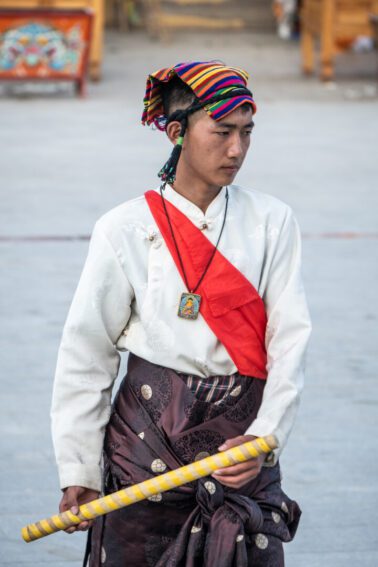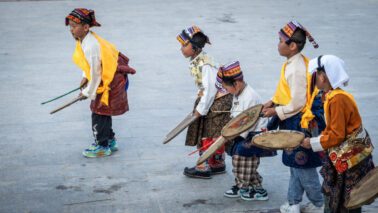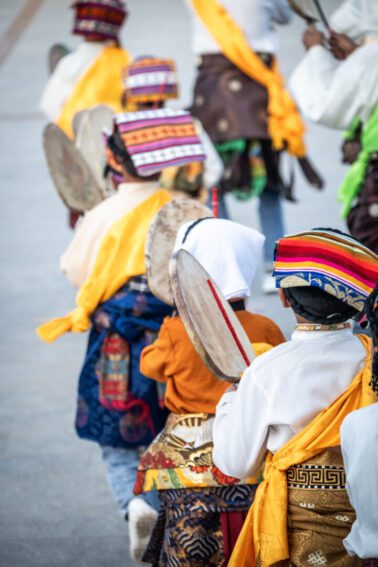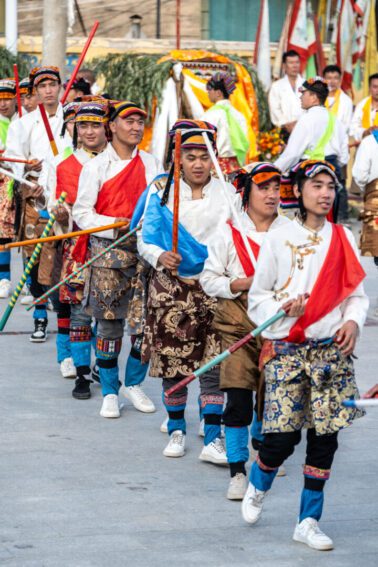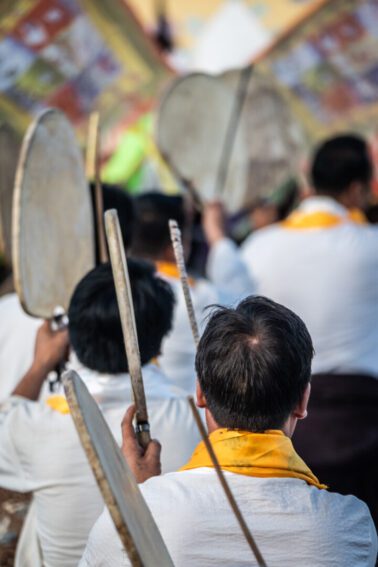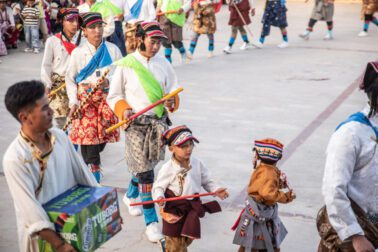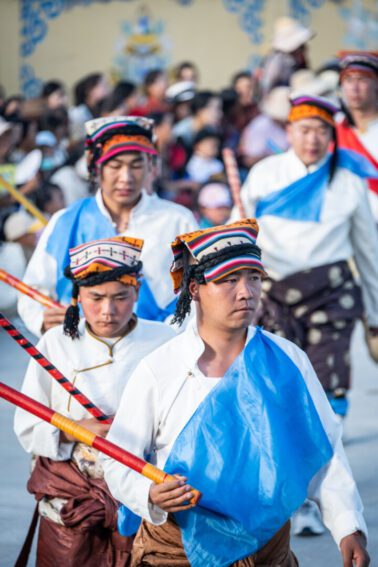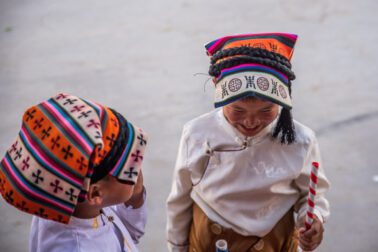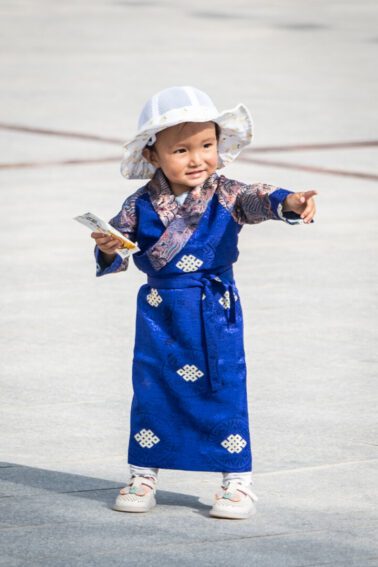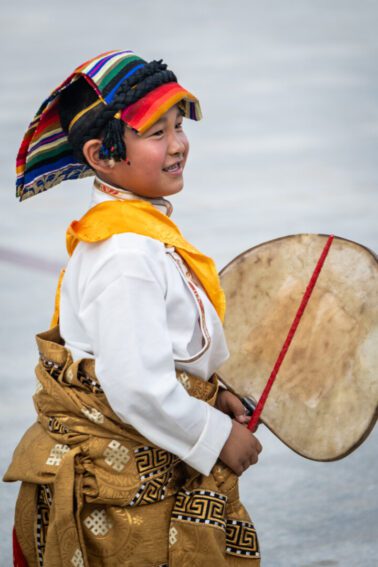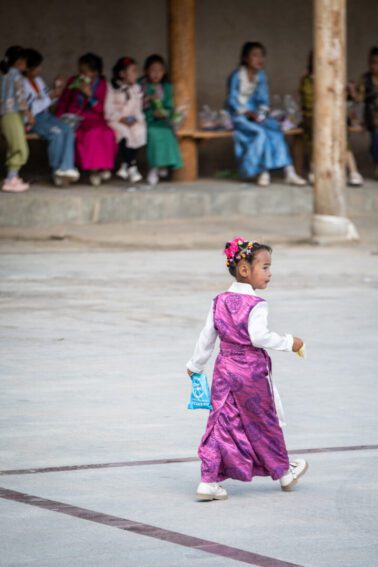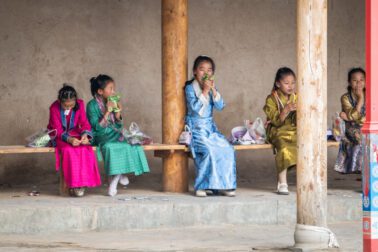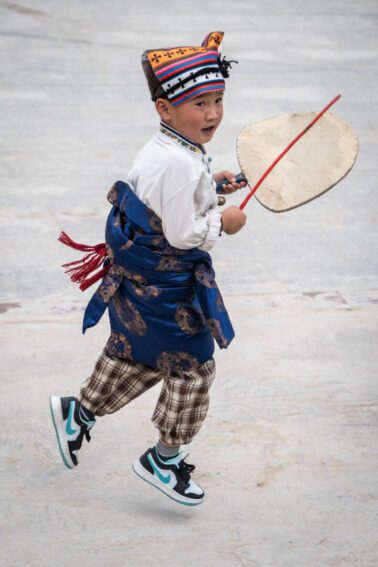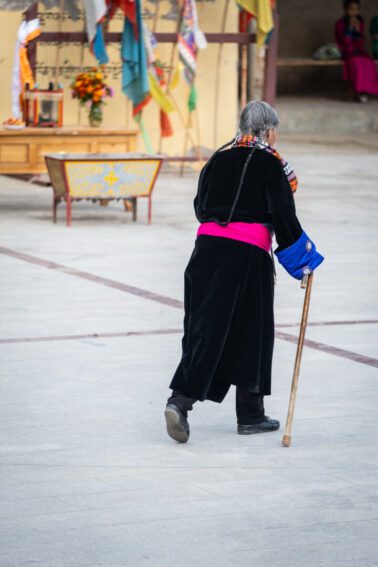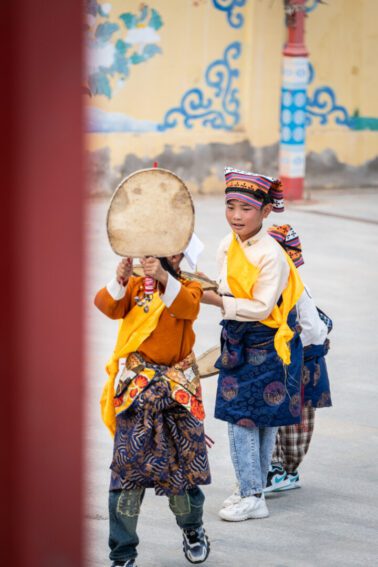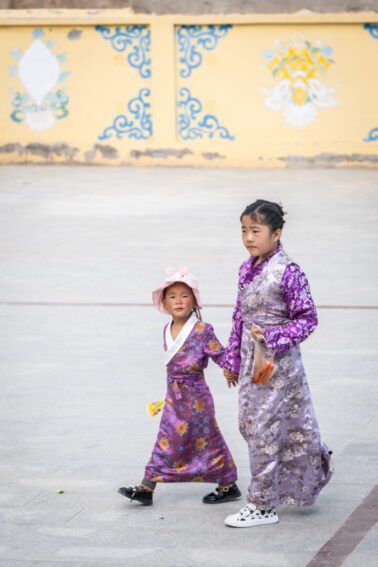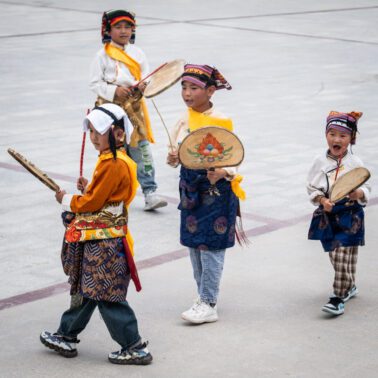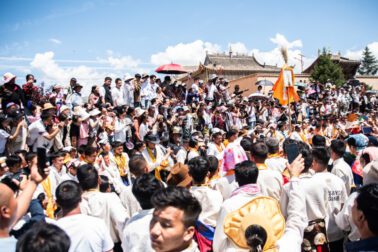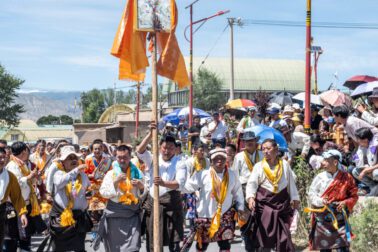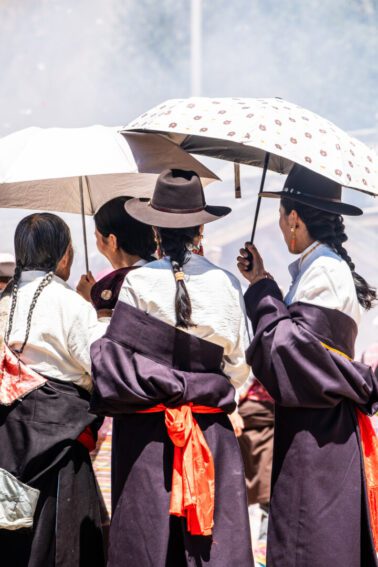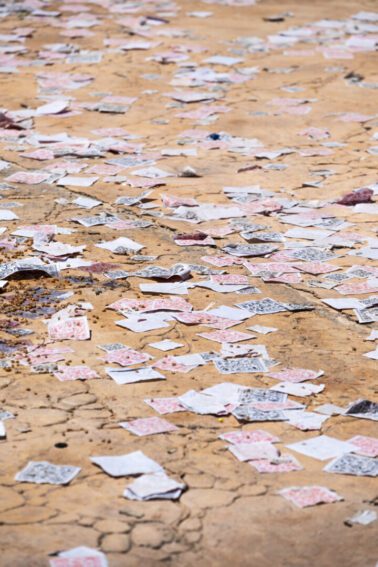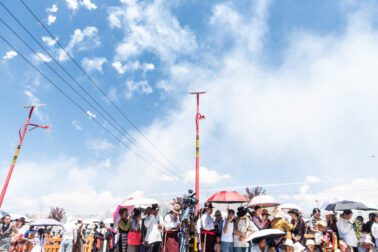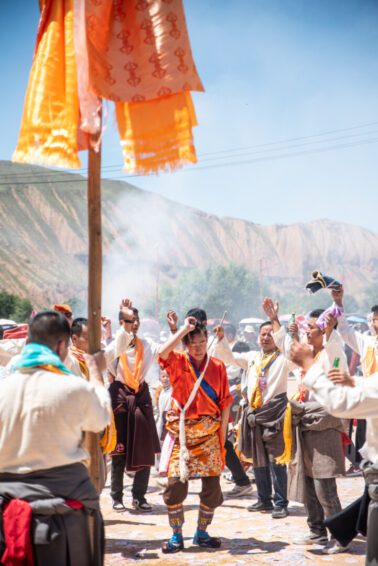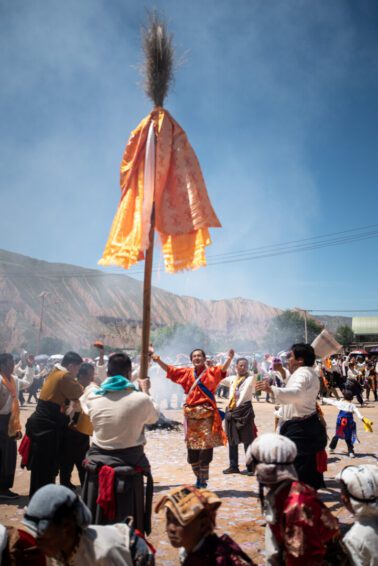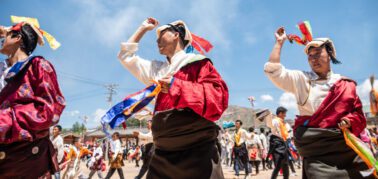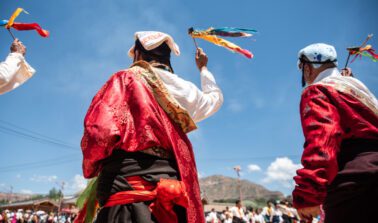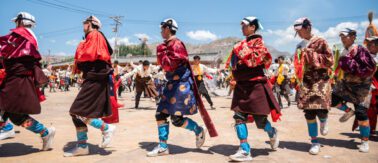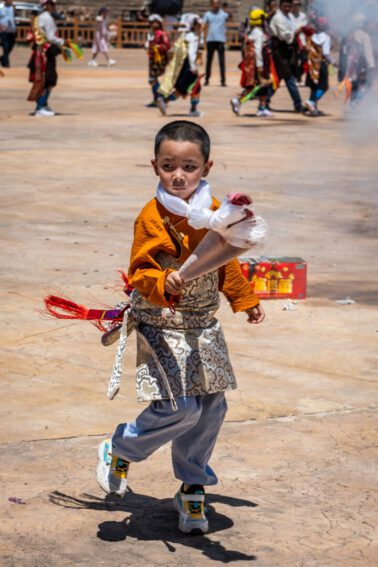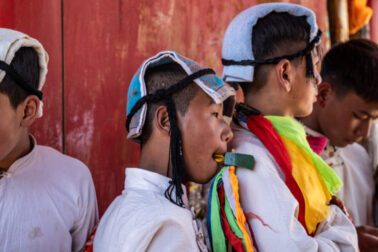11-DAYS TIBETAN SHAMAN FESTIVAL PHOTO TOUR
Also known as LUROL FESTIVAL
July 12th to 22nd, 2024
– group size: 4 to 6 people –
This tour is a very enriching experience that combines photography and culture. Through a 11-days journey, we will travel to Amdo region, which is one of the three historical Tibetan regions, together with Kham and U-Tsang. Amdo covers most of the Chinese province of Qinghai, as well as small but culturally important parts of Gansu and Sichuan. This areas of China are especially interesting as in some parts, Buddhism coexists with Islam. Although photography will be present all along, we will also visit places for their cultural interest, and you will learn a lot about Tibetan Buddhism, and life in Tibetan areas of China.
Shamanism is a tradition that goes back before Buddhism was introduced in Tibet, and that survives until now. Every year, during the sixth month of the lunar calendar, monastic feasts unfold. The festivities include the deployment of thangka, masked dances performed by monks, and various ceremonies.
Monastic dances, such as the cham dance associated with different schools of Tibetan Buddhism, are dynamic performances featuring dancers adorned in masks and special costumes. Accompanied by traditional Tibetan instruments played by monks, these dances convey moral instructions and bestow merit upon observers. The masks worn during these dances represent historical figures from Tibet and great Buddhist masters. They also embody qualities to be cultivated: compassion, energy, and knowledge. Each monastery showcases specific dances with wooden or papier-mâché masks crafted by renowned artists. Some masks are centuries old, while others are more recent, collectively representing a cultural, artistic, and religious heritage that has been upheld since the 8th century.
In a constantly evolving society, this trip is a unique chance to witness and capture some ancestral Tibetan and Shamanic traditions that are still preserved to this day, discover the life of locals and shoot some portraits photo, and immerse yourself in Tibetan Buddhism.
HIGHLIGHTS
- Monastic feasts of Amchok and Kyi kor Gar monasteries, an amazing chance to capture lively traditional performances
- Visit the famous Labrang Monastery and witness the many tourists dressing in traditional tibetan costumes to take photos, a massive trend in China over the recent years.
- Local festivities of the Shaman festival: deployment of thangkha, and danses and performances featuring dancers adorned in masks and special costumes.
- Specific dances of each monastery with their unique wooden or papier-mâché masks crafted by renowned artists.
- Landscape photography at Kanbula National Forest Park with its distinctive danxia landforms, and Achong Namzong Nunnery and its impressive surroudings
- Private portrait photo sessions of local people specially dressed up to attend the festival
- A lunch and a dinner in local families to better experience Tibetan culture and hospitality.
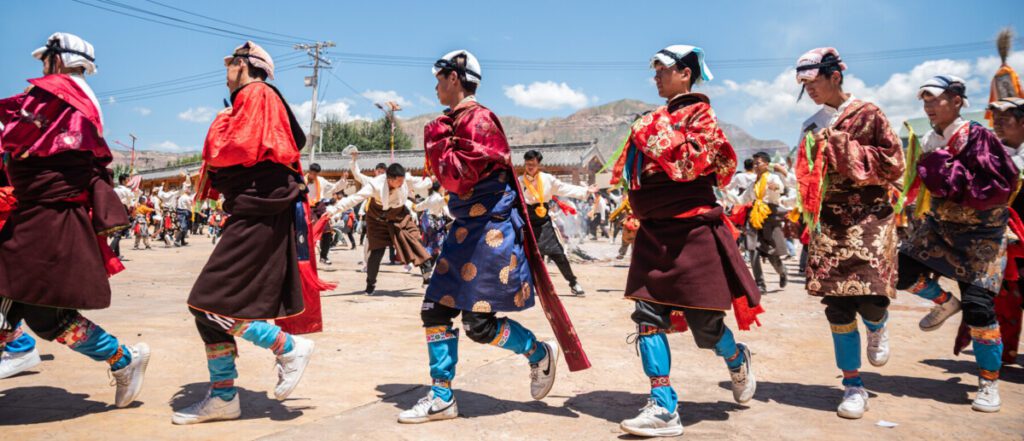
DETAILED ITINERARY
DAY 1 / JULY 12TH, 2024
Altitude: 1600m
Upon you arrival at Lanzhou airport, we will pick you up at the airport. If there is enough time after your arrival, we will have a quick visit of Lanzhou city and do some street photo, and taste and discover the making of the famous Lanzhou noodles.
DAY 2 / JULY 13TH, 2024
Altitude: 2900m
Today, we will head to Hezuo, in the Tibetan region of Amdo which nowadays consists of the three Chinese provinces of Gansu, Qinghai and Sichuan. We will immerse ourselves in Tibetan architecture by visiting the Milarepa Tower. We will then continue our journey to Amchok Monastery, and hopefully witness there the big tangka display.
Amchok monastery is a Gelupa monastery established around 300 years ago by the Second Jamyang Zhepa, and closely affiliated with the famous Labrang Monastery.
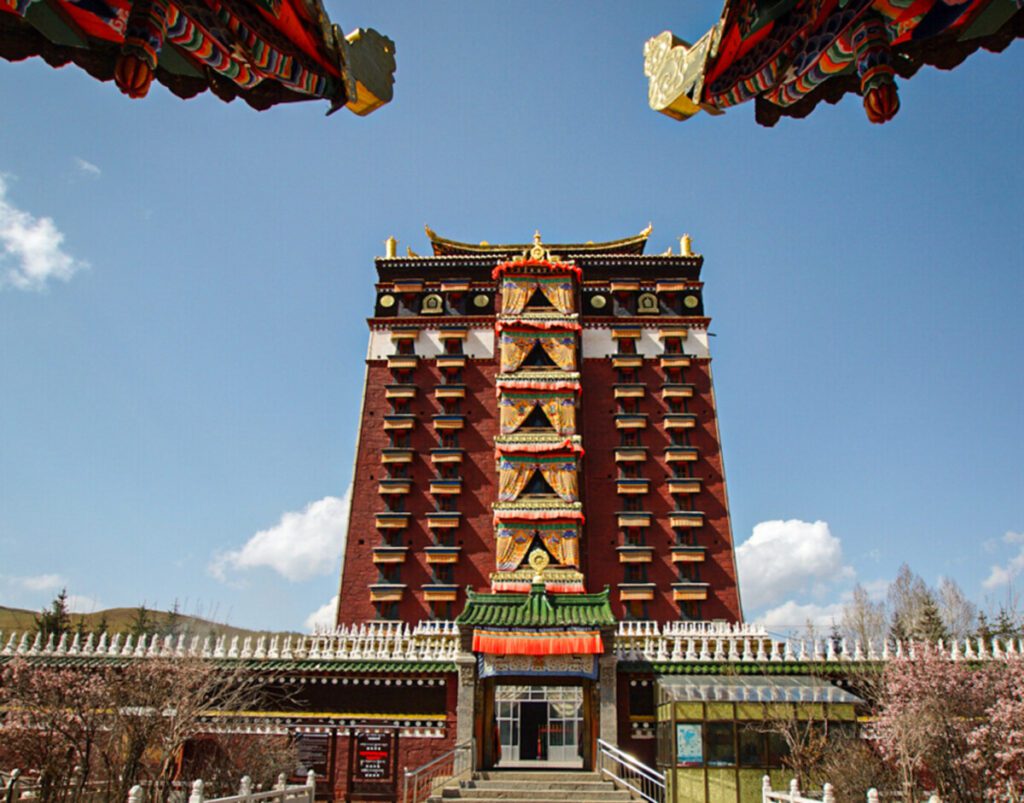
DAY 3 / JULY 14TH, 2024
Altitude: 2900m
Today, we drive to Amchok town to see the Torma offerings ceremony. Very early in the morning, the serene landscape comes alive as local nomads join forces with monks to engage in a grand Puja ceremony. We will have a chance to shoot photos of nomads wearing beautiful festival clothes.
The ritual of Torma display and offerings holds a significant place in Tibetan culture. Tormas, or sculpted dough figures, are crafted and offered to various entities, ranging from deities and Dharma Protectors to obstructing spirits and other lower beings. Tormas are specifically designed to obstruct spirits and are also known as “gektor”.
Puja ceremony involves presenting sizable tormas along with tsampa (a typical Tibetan staple food made of roasted barley flour), tea, silk, and a selection of fruits. This very important ceremony only occurs only once a year, and is dedicated to honoring and appeasing local spirits.
The synergy between the local community and the monks creates a harmonious blend of tradition and spirituality, emphasizing the interconnectedness between the earthly and divine realms. The offerings made during the Puja ceremony serve as gestures of reverence, seeking blessings and protection for the community and its surroundings. This annual event stands as a testament to the rich tapestry of Tibetan rituals and the deep-rooted connection between the people and the spiritual entities that inhabit their land.
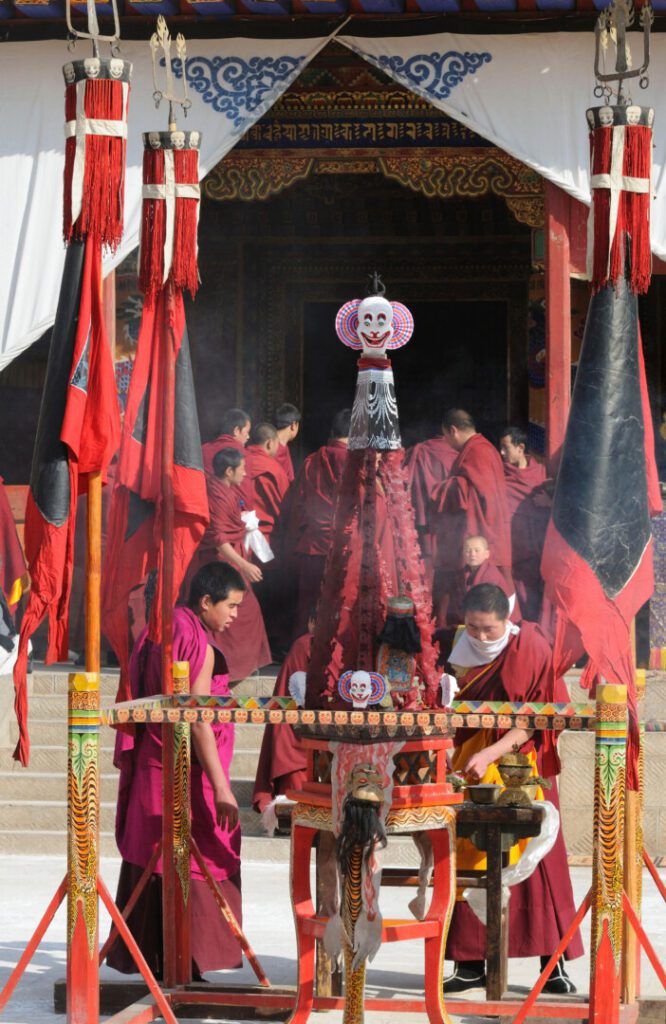
DAY 4 / JULY 15th, 2024
Altitude: 2900m
Today, we will drive to Amchok town to capture the Ceremony of Maitreya transportation. We will grasp this chance to take photos of some participants with their beautiful masks.
Maitreya, the anticipated future Buddha, is destined to grace Earth when the teachings of Gautama, the Present Buddha, wane into obscurity. This extraordinary event is poised as a profound turning point for Buddhism, a rekindling of spiritual flame in times of neglect. At the heart of these sacred celebrations, the Maitreya statue takes center stage, casting a luminous presence that transcends time.
During vibrant Tibetan New Year festivities and other significant occasions, the Maitreya statue is not merely a symbol but a living embodiment of hope and renewal. Its graceful procession around the monastery’s perimeter becomes a majestic dance of faith, a ceremonial ballet executed with unwavering reverence and love. The Maitreya statue, adorned in timeless grandeur, gracefully gliding on a two-wheeled cart, drawn by devoted believers who willingly lend their energy to this sacred task. Alternatively, it may be cradled on the shoulders of monks or revered individuals intricately tied to the monastery’s spiritual tapestry.
This ceremonious journey is more than a mere spectacle; it’s a visual poem reminding all witnesses to ‘keep the faith.’ As the statue circumambulates the monastery, it weaves a narrative of commitment to preserving the sacred teachings of the Dharma and upholding the profound wisdom bestowed by Buddha. In the rhythm of each annual procession, a poignant reflection emerges—an invitation to reconnect with timeless Buddhist principles. It beckons believers to stay anchored in their faith, fostering a collective commitment to the enduring legacy of spiritual enlightenment.
Some masks are centuries old, while others are more recent, collectively representing a cultural, artistic, and religious heritage that has been upheld since the 8th century.
DAY 5 / JULY 16TH, 2024
Altitude: 1900m
Today, we will continue our journey to Labrang Monastery
Labrang Monastery is an iconic spiritual center. Labrang Monastery is home to the largest number of monks outside the Tibet Autonomous Region and is one of the six great monasteries of the Gelug School of Tibetan buddhism.

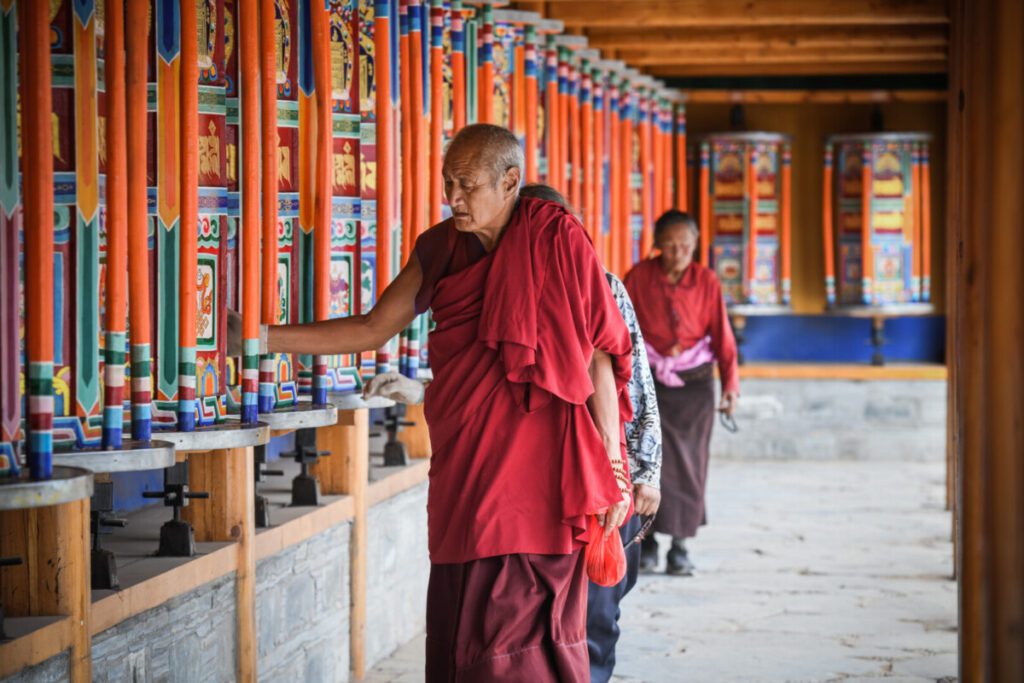
We will then head to Xunhua. If weather conditions permit, we may do on a small hiking adventure, ascending up to about 4000m mountain called Chachen.
Xunhua is steeped in historical significance as the birthplace of the 10th Panchen Lama. It is predominantly also inhabited by the Salar people, a Muslim minority group that migrated from Central Asia centuries ago.
In Xunhua, we are presented with a unique opportunity to witness a replica or a pictorial exhibition of one of the world’s oldest handwritten Qurans. We will take photos of the outside of the mosque and do street photography.
Xunhua Mosque is an ancestral sanctuary for the Salar people, stands as the second largest mosque in Qinghai. Despite enduring multiple expansions and reconstructions since the Qing Dynasty, it faced destruction during the Cultural Revolution, only to be resiliently rebuilt in 1982. Encompassing an impressive area of 4,210 square meters, this historic mosque holds a distinguished place in Salar-populated regions.
DAY 6 / JULY 7TH, 2024
Altitude: 1900m
Today, we continue our journey towars Wendu Kyi Kor Gar Monastery, where we will witness the captivating Maitreya transport ceremony in the morning. It is a sacred event, filled with cultural and spiritual significance, that promises to be a highlight of our visit.
Later in the afternoon, we anticipate the mesmerizing Tangka display, an art form that narrates stories of profound spirituality and tradition.
As the day unfolds, we’ll immerse ourselves in the vibrant energy of the festivities and the cultural richness that surrounds us. In the evening, our exploration takes us to the home of the 10th Panchen Lama, providing a unique insight into the life and legacy of this revered figure. Additionally, we’ll visit a grand stupa nearby, an architectural marvel that stands as a testament to the spiritual heritage of the region.
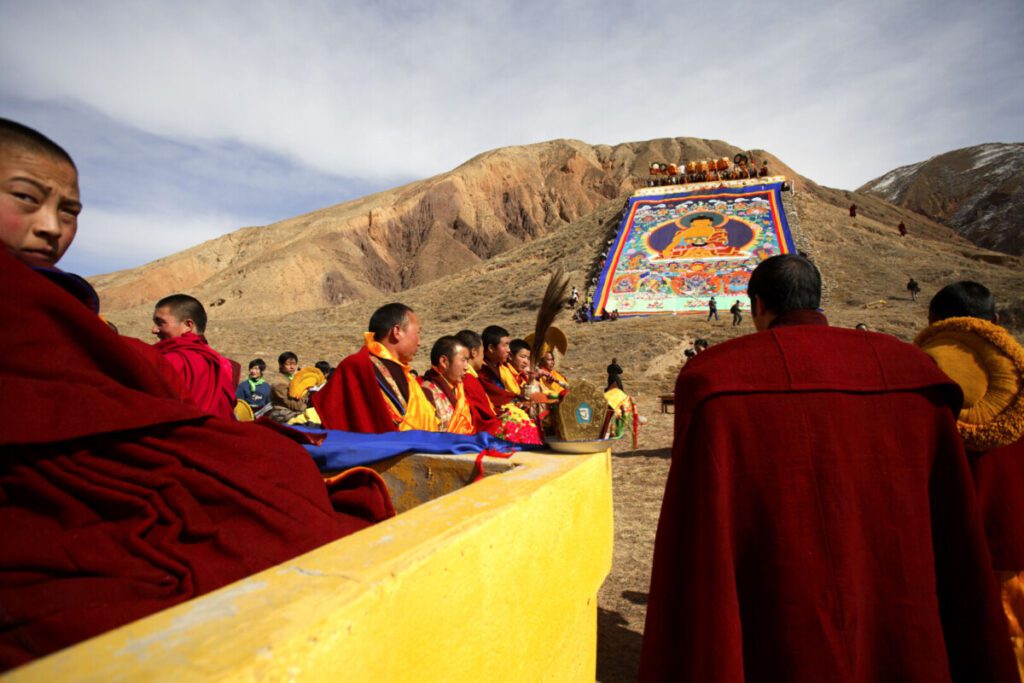
DAY 7/ JULY 8TH, 2024
Altitude: 1900m
The following day, our journey takes us back to Wendu Kyi Kor Monastery in the morning to witness the enchanting Mask Dance, specifically the performance of Gongbo Dorjee Cham, portraying the life of Milarepa. Additionally to photographying the performance itself, we will shoot portrait of the dancers and their masks.
Milarepa’s profound life story is an integral part of Tibetan culture, celebrated and retold through various biographies. Milarepa’s biography is not only a historical narrative but a revered source of inspiration across Tibetan schools. Venerated for his religious dedication and mastery, Milarepa’s life story played a pivotal role in establishing the lineage of the Kagyu sect and its key figures. While historical details about him are limited, the impact of Milarepa as a spiritual exemplar resonates deeply within Tibetan communities.
As evening falls, our exploration extends to a Tibetan farmer village, providing a unique opportunity to connect with the locals. Amidst the serene surroundings, we’ll share a moment of warmth over tea, fostering cultural exchanges and creating lasting memories of the genuine hospitality found in these tranquil villages. A chance also to capture the local life and people. This immersive experience promises to be a delightful blend of spiritual exploration and genuine connections with the vibrant Tibetan community.
DAY 8 / JULY 9TH, 2024
Altitude: 1900m
No festival this day. We will wake up early and head to the mesmerizing Kanbula National Forest Park, nestled in Jianzha, to capture the sunrise.
Kanbula National Forest Park is a testament to the wonders of nature, boasting unique features like finger-like mountains, canyons, and cliffs that dramatically rise from the Yellow River. These distinct landforms are the renowned Danxia formations, characterized by striking red sandstone formations found in various parts of China.
Within the park, we will explore the Achong Namzong Nunnery, a serene enclave in this breathtaking natural setting. Adjacent to the nunnery lies a picturesque hill, enticing us to embark on a memorable hiking adventure. The views from this vantage point promise to be awe-inspiring, offering a panoramic perspective of the surrounding Danxia formations and the meandering Yellow River.
As our day unfolds, we might opt for a later lunch at a local family’s house, providing an authentic taste of the regional cuisine and an opportunity to connect with the warm hospitality of the locals.
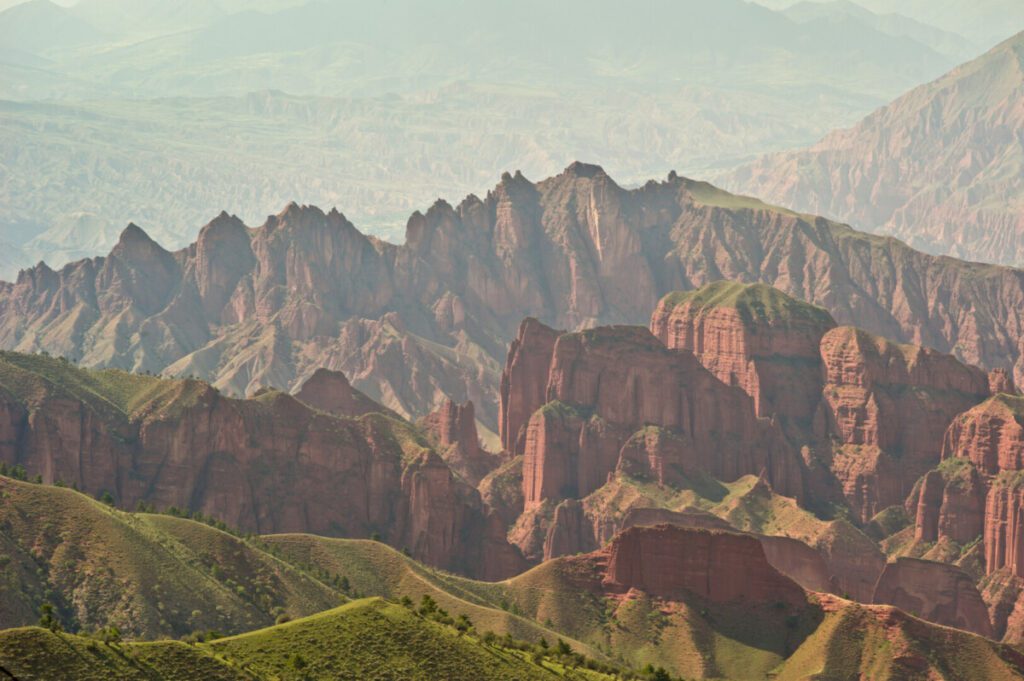
DAY 9 / JULY 10TH, 2024
Altitude: 2500m
Today, we’re heading to Dowei to experience the largest Labtse festivals.
Even though Labtse constructions are seen all over ethnic Tibet, there’s not much written about deity cults, especially mountain deity cults like Labtse. This might be because Labtse rituals are often seen as part of “folk religion”, and educated Tibetans, especially in monastic circles, might consider these practices too popular to be included in texts for outsiders.
Labtse rituals are exclusive, creating a deep connection between the community, the location, and the mountain deity. This exclusivity is why there’s limited scholarly attention—outsiders usually can’t participate, maintaining the special power of these rituals.
As the day goes on, we reach the funner part of the celebration. The day is filled with games and friendship, creating a lively atmosphere. We will also have opportunities for shooting local people’s portraits. In the evening, we will have a diner in a local family.
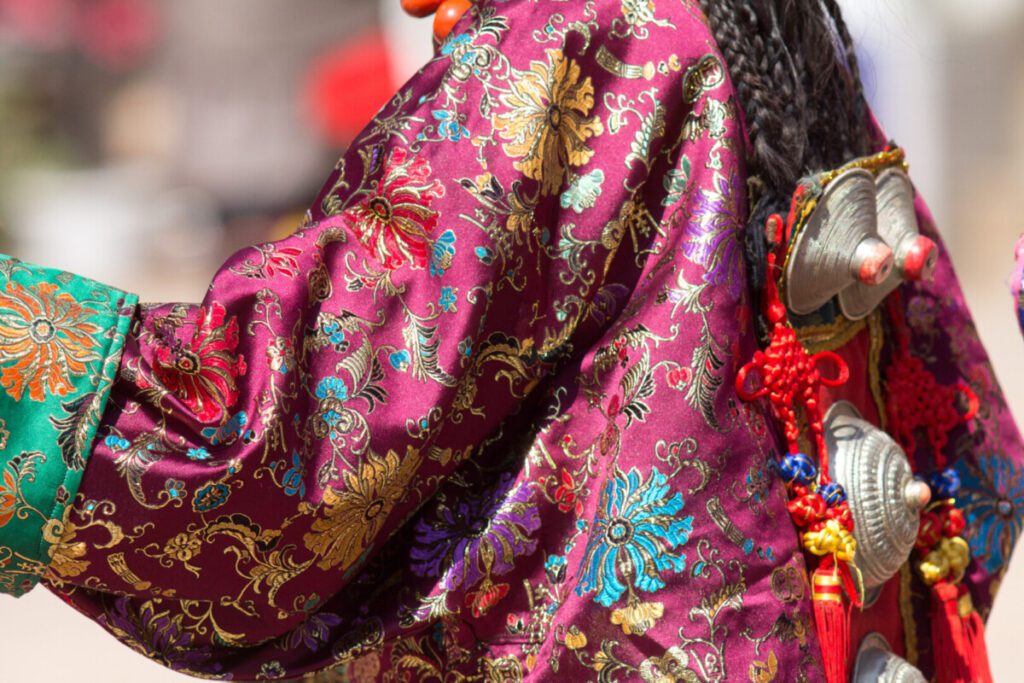
DAY 10 / JULY 11TH, 2024
Altitude: 2500m
Wake up in Tongren for a glimpse of some sights of the small city, then visit Shaman Festival preparations in Sarkyi village. Our journey culminates in the enchanting Shaman Festival, also known as the “June Festival”.
This traditional folk religious celebration is observed by the Tibetan and Tu communities in the Longwu River Basin.
The Shaman Festival involves elaborate ceremonies like invoking the Mountain God, sacrificial rituals, and vibrant dancing. Rooted in primitive traditions, these events showcase cultural richness and spiritual practices. Spanning over 500 years, the festival offers a rare opportunity to immerse in authentic ethnic culture in the Tongren region.
Recognized as part of the List of National Intangible Cultural Heritage of Humanity, the Shaman Festival provides a unique chance to witness the rituals, vibrant performances, and profound spiritual atmosphere that define this extraordinary celebration.
We will witness a Tibetan festivals and a Tu festival until the evening.
DAY 11 / JULY 12TH, 2024
Altitude: 2500m
In the morning, if time allows, we will have a look at our photos together. We can discuss together about the pics we took and how to improve our photography practice. We will then embark on a scenic drive to Xining airport, concluding our journey with memories of authentic cultural encounters, breathtaking landscapes, and a deep appreciation for the diverse heritage of this remarkable region.
IMPORTANT NOTES
- The altitude during this trip is 1900 and 2900m. If you are sensitive to altitude, or experienced altitude sickness in the past, it is advised to bring some medicine with you. Acetazolamide (also called Diamox) is a good option. When in altitude, we also recommend that you lower your pace, and avoid heavy meals (it is better to eat more small meals during the course of the day than few heavy ones).
- Schedule can be adjusted according to possible change in the festival schedule, and the weather. In the event of rain, the locals might decide to cancel the festivals, ensuring the safety and sanctity of the celebrations.
- Family visits and portrait session schedule is to be confirmed.
GROUP SIZE
Minimum 4 people, maximum 6 people
PRICE
3900 €
(Single room supplement: 280 €)
INCLUDING
- English/French/Chinese-speaking professional photographer guidance
- English/Chinese/Tibetan-speaking local driver + guide
- All in 4* category (based on double occupancy)
- All meals with water and/or tea (chinese and tibetan meals)
- All entrance fees
- Private transportation from your pickup at Lanzhou airport to your drop-off at Xining airport
- Expenses for people photograph
- Water bottles throughout the days
EXCLUDING
- Flight to Lanzhou and from Xining
- Other drinks
- Travel insurance and cancellation insurance
- Tips for local staff
- Visa fees if any
RECOMMENDED GEARS
- One or two camera bodies (it can be convenient to bring two if you have, to avoid changing lens too often, but not necessary).
- Lenses, ideally 24-70mm and 70-200mm (full frame)
- A bigger zoom such as 100-400 can be useful for some festivals
- Additional batteries and SD cards
- Tripod can be useful but not mandatory, as we will mostly taking photos during the day of people moving, so it mostly depends on your shooting habits. If you need one and can’t bring one, we will bring a spare one, but you can bring ball head.
- Drone can be used in most areas so you can bring one as well if you want
- Other gears or accessories according to your habits
Q&A
-
WHAT IS THE DIFFERENCE BETWEEN A REGULAR TOUR AND A PHOTO TOUR?
Photo tours are especially designed for photo taking. It means that what you will see can be quite different from what people who visit the same place with a regular travel itinerary will see. We will go to places that are particularly photogenic, or meet local people who will introduce us to their culture or to some of their tradition to facilitate the shooting. It also means that we will often wake up earlier than most travelers, in orders to capture the best light and bring the best photos, so our schedule could be a bit different. For instance, we can get up very early to catch the sunrise, then come back to the hotel for breakfast, or take a break during midday when the sun is too strong and then go out later again to capture the golden hour and sunset, or some night views. It all depends on the itinerary of the tour.
-
DO I HAVE TO BE A PHOTOGRAPHER TO PARTICIPATE?
You don’t have to be a photographer, amateur or professional, to participate to our photo tours. As long as you enjoy photography in general and the idea of capturing the best moments, you should enjoy traveling with us! Photographers of any level can enjoy our tours, from beginners to advanced, even smartphone photographers! The idea is also to learn from each other and to enjoy! We recommend however that you to let us know a bit more about your level and material beforehand so we can adjust the tour accordingly so you can make the most of it.
Please note that for photographers with specific requirements, it is also possible to organize customized tours. Please contact us for more information.
-
WHAT GEAR DO I NEED?
You can choose the gears you want, and we can also give you some recommendations if you need. But a camera that offers manual settings option is necessary if you want to make the most of your travel.
A basic kit for travel photography would be a camera body that offers manual settings and or or two versatile lenses, such as 24-70mm and 70-200mm. For some trips, some specific lens could be recommended such as bigger zoom . We would also usually advice to bring a tripod for low light photography (we usually bring one spare tripod with us as well in case you don’t have one, but it is better to let us know in advance in that case). We will let you know for each trip what gear we suggest.
-
WHAT IF I DON’T HAVE SOME GEARS? CAN I RENT THEM?
In China, it is possible to rent cameras and lenses. I have a partner in Beijing with whom I can arrange this. However, please let me know several weeks ahead to have enough time to arrange. This service is not included in the price of tour. We would give you a quotation beforehand, and a deposit would be needed additionally to the daily fee. Please not that it is not possible to rent drones in China.
-
CAN I USE DRONES?
It depends on the destination. In China, drones have become increasingly popular over the last years, and regulations are adjusting fast. So far, drones are allowed in most our shooting locations in China, but forbidden in big cities for instance.
-
HOW ABOUT SETUPS AND “STAGED” PHOTOGRAPHY?
We will arrange setups for you to shoot picture of people during the tours. Some of you could have the idea that it lacks authenticity, but there are reasons why we work like this. First it is a way to make sure you will end up with good photos, as it is very helpful to create a beautiful shot, because you will have more time to find the right angle, ask for a specific posture, or see how to capture the best light. The people we will photograph are not models, they are local people willing to showcase their traditions and culture for us, and give us a chance to witness what most visitors will have a hard time witnessing. Besides this, there can be some specific reason to go with setups. For instance, in China, the society is evolving very fast and traditions are quickly fading. To be able to capture them, we will go to the people who are really familiar with those traditions for they have lived with them for most of their life, and therefore are the best at showing us what those traditions are.
-
HOW ABOUT STREET PHOTOGRAPHY?
Street photography is also part of our tours. We do our best to bring you a good balance between landscape photography, arranged setups for portrait photography, and street photography. However, when doing street photography, we ask you to always behave respectfully wherever we go, to respect the local people and culture, and to ask for permission when taking photos of people.
-
DO YOU WORK ALONE OR WITH A TEAM?
I do the scouting and choose the itineraries by myself, but I have local partners with whom I collaborate, like local drivers, guides and travel agencies. Tours are all organized in partnership with local travel agencies with proper licenses and authorizations. We want you to be able to join our tours stress-free!
-
HOW ABOUT VISAS?
Citizens from France, Spain, Italy, Germany, Holland and Malaysia can stay in China without visa for a duration of up to 14 days according the new visa rules issued on December 1st, 2024. For the countries that require visas, we can assist you by providing invitation letters, detailed itineraries, or helping you with flights booking. Please contact me directly for more information.
For more information and for registration, please contact me at: hello@cecilezehnacker.com .

